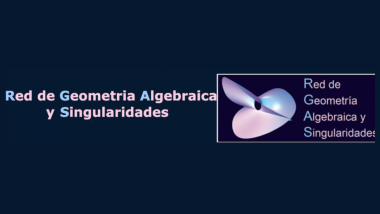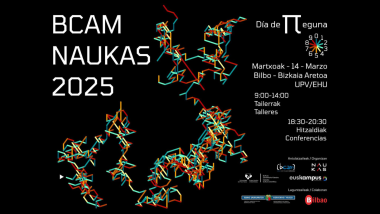Daniel García has defended his doctoral thesis
- The defense took place in the Faculty of Science and Technology of the University of the Basque Country, located in the Campus of Leioa, on Friday June 22nd
Daniel García obtained the degree of Mechanical Engineering in 2010 at National University of Colombia, where he completed a Master in Mechanical Engineering as well. He then continued his studies at the King Abdullah University of Science and Technology (KAUST) in Saudi Arabia where he became part of the Numerical Porous Media Center (NUMPOR), while he completed a second Master in Mechanical Engineering. He joined the Basque Center for Applied Mathematics within the Simulation of Wave Propagation research line in 2015 as a PhD student.
His doctoral thesis has been directed by BCAM-UPV/EHU Researcher and Ikerbasque Research Professor David Pardo and Professor Victor M. Calo from Curtin University.
On behalf of all BCAM members, we would like to congratulate Daniel.
Title: Refined Isogeometric Analysis: a solver-based discretization method
Isogeometric Analysis (IGA) is a computational approach frequently employed nowadays to study problems governed by partial differential equations (PDEs). This approach defines the geometry using conventional CAD functions and, in particular, NURBS. These functions represent complex geometries commonly found in engineering design and are capable of preserving exactly the geometry description under refinement as required in the analysis. Moreover, the use of NURBS as basis functions is compatible with the isoparametric concept, allowing to build algebraic systems directly from the computational domain representation based on spline functions, which arise from CAD. Therefore, it avoids to define a second space for the numerical analysis resulting in huge reductions in the total analysis time. For the case of direct solvers, the performance strongly depends upon the employed discretization method. In particular, on IGA, the continuity of the solution spaces plays a significant role in their performance. High continuous spaces degrade the direct solver's performance, increasing the solution times by a factor up to O(p^3) with respect to traditional finite element analysis (FEA) per unknown, being p the polynomial order. In this work, we propose a solver-based discretization that employs highly continuous finite element spaces interconnected with low continuity hyperplanes to maximize the performance of direct solvers. Starting from a highly continuous IGA discretization, we introduce C^0 hyperplanes, which act as separators for the direct solver, to reduce the interconnection between the degrees of freedom (DoF) in the mesh. By doing so, both the solution time and best approximation errors are simultaneously improved. We call the resulting method ``refined Isogeometric analysis" (rIGA). Numerical results indicate that rIGA delivers speed-up factors proportional to p^2. For instance, in a 2D mesh with four million elements and p=5, a Laplace linear system resulting from rIGA is solved 22 times faster than the one from highly continuous IGA. In a 3D mesh with one million elements and p=3, the linear rIGA system is solved 15 times faster than the IGA one. We have also designed and implemented a similar rIGA strategy for iterative solvers. This is a hybrid solver strategy that combines a direct solver (static condensation step) to eliminate the internal macro-elements DoF, with an iterative method to solve the skeleton system. The hybrid solver strategy achieves moderate savings with respect to IGA when solving a 2D Poisson problem with a structured mesh and a uniform polynomial degree of approximation. For instance, for a mesh with four million elements and polynomial degree p=3, the iterative solver is approximately 2.6 times faster (in time) when applied to the rIGA system than to the IGA one. These savings occur because the skeleton rIGA system contains fewer non-zero entries than the IGA one. The opposite situation occurs for 3D problems, and as a result, 3D rIGA discretizations provide no gains with respect to their IGA counterparts.
Related news
BCAM pertsonak
Zentroari buruz




